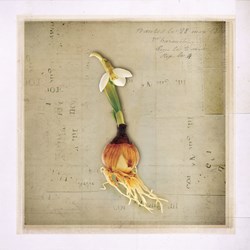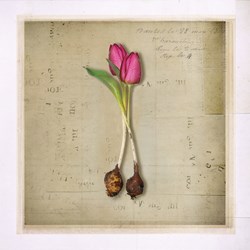From bulbs to bloom
This week we have Lisa Lempsink talking through garden bulbs and the best way to get them in the ground in good time before they flower.
 About bulbs
About bulbs
Bulbs are incredibly useful ways of brightening up gardens, patios and balconies from as early as January and are easily one of the easiest and most rewarding garden plants to grow.
Coming in all shades -from dark purple to scarlet or white- they give a flexible, cost-effective way to brighten up and change your space.
Getting the most out of your bulbs is not difficult. If you do a bit of research, you'll find you can actually put together a series of bulbs that will give continuous colour from January through to June.
This will of course depend on what you actually like bulb-wise but snowdrops and winter aconites are the obvious choices for January and February followed by crocus, muscari, narcissi and scilla. Then come your daffodils and tulips many of which will flower until the end of May.
If you want your snowdrops and winter aconites to flower this coming January, I would buy both of them 'in the green' as it's called. That means you can see the flower you are buying, and check it has been correctly identified.
If you're happy to wait a year or two for your snowdrops and winter aconites to appear, then buy the bulbs. Whichever way you choose, it will not be long until you can divide the clumps of snowdrops and you'll find you have plenty to fill your garden.
What to plant when?
- Plant spring flower bulbs such as daffodils, crocus and hyacinths, preferably by the end of September but don't worry if that runs into October
- Plant tulips in November
- Plant hardy summer-flowering bulbs, such as lilies, alliums and crocosmia, in September and October
5 step guide to bulb planting in borders
- Try to plant the bulbs in groups of say at least 6 which makes for a much better final display.
- Dig a hole wide and deep enough for the bulb. The rough planting depth is worked out by measuring the bulb from base to tip and doubling or tripling this.
- Use bulb compost when planting bulbs and put some of that in the hole you've created and then on top of the bulb once planted.
- Place the bulbs in the hole with their shoot facing upwards and space them at least twice the bulb's own width apart.
- Replace the soil and gently firm with the back of a rake and avoid walking or standing on the soil as this can damage the bulbs.
Lisa Lempsink
Lisa is a qualified Garden Designer living in central Edinburgh but working throughout the Lothians, Borders and Fife. She has a passionate interest in both design and planting and has worked on many varied gardens from modern new builds to Victorian and Edwardian properties.
Offering a fully flexible and bespoke service, Lisa is happy to simply give advice on ways to improve your outdoor space, right through to providing a full design and build service.
Pop in and see Lisa in the ESPC Showroom in George Street Edinburgh, on either Friday 26th or Saturday 27th October, 12-2pm, where she is giving spring bulb planting demonstrations. For more information on the individual services Lempsink Garden Design provides, visit her website -lempsink.co.uk.



